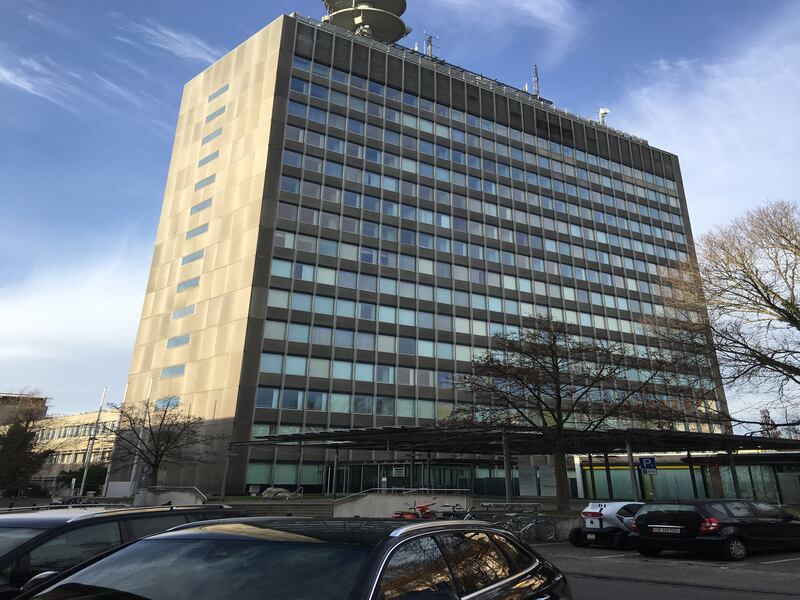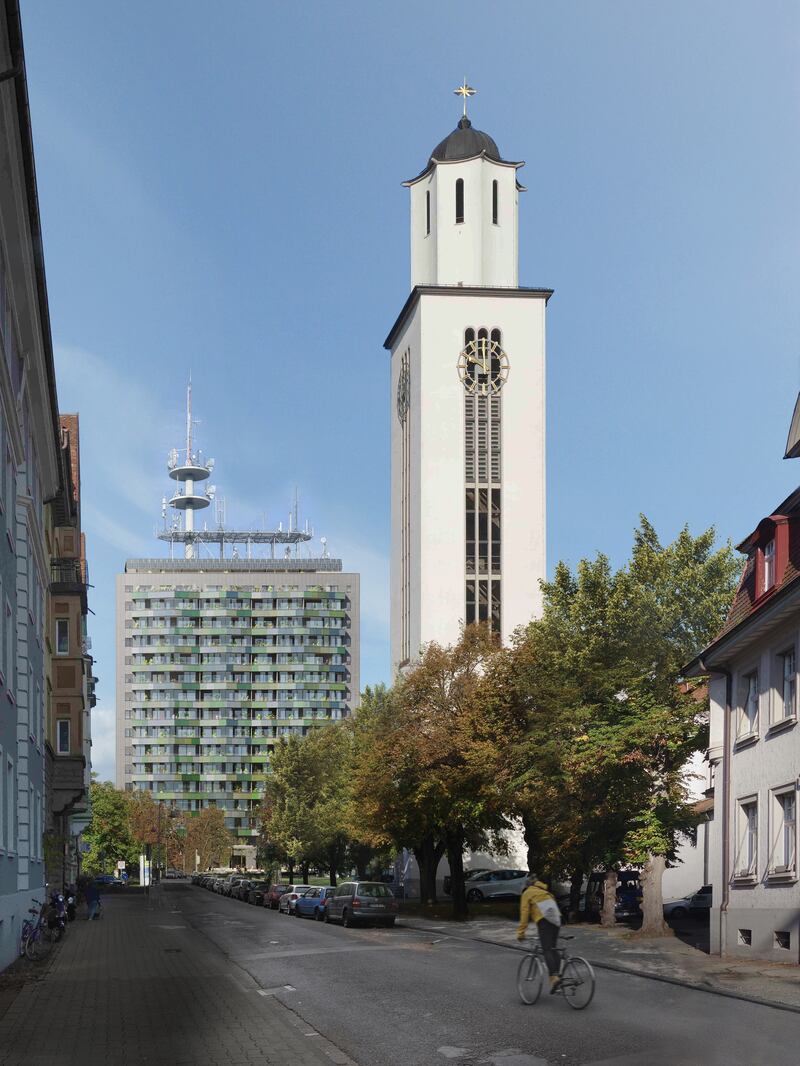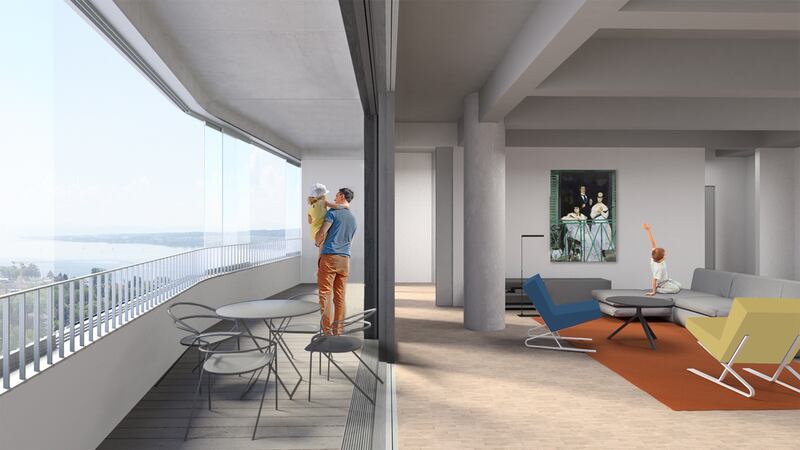In the middle of Konstanz in southern Germany, a beautiful medieval city on the Rhine and the shores of Lake Constance that survived the second World War intact, stands a 16-storey complete and utter eyesore.
“It is pretty out of context,” architect Matthias Sauerbruch says of the former Telekom Tower, a 60m tall concrete office block built in 1971 and topped with 30m tall telecommunications masts, making it the tallest structure in the city.
The building was constructed for the German post office, with floors rented to several firms over the years. However, it faded in popularity with the office market and following several years of increasing vacancy it was bought in 2017 by Dutch residential investment firm BDP.


Not so long ago this would be seen as an ideal opportunity to excise a carbuncle, clear the site, and start again with something more fitting to the historic town.
BDP didn’t do that, and instead chose architects Sauerbruch Hutton to convert the building to residential use, with 98 apartments in the tower block and a further 135 new homes on the land surrounding it due for completion in 2025.
“It actually is, objectively, a total eyesore. Not only is it a pretty uninspired 1960s office building but there’s huge antenna on the top used for the telecoms,” Sauerbruch says. “In the 1960s the post office had authority over planning permission so they could build an office building in the middle of anywhere without any restrictions. You would never get planning permission for a building like that any more.”
This, he says, means it offers an unparalleled opportunity for residential development which otherwise would not be permitted.
“One of the original motivations for us getting involved was to take advantage of this privilege of site. Particularly on the upper levels, the views are absolutely stunning, you can see the alps, it’s fantastic, really, really amazing. That is a key asset; it is a beautiful location, the building is existing, and you wouldn’t be able to repeat that.”
Converting a building of this age and size is not without challenges, his partner Louisa Hutton says.
“To start with, to assess the structure of the building and its load-bearing capacity is actually quite difficult, because you only really see the condition of the concrete once you start demolishing all the partition walls that are non-load bearing during the clearing out of the building. We found areas where the reinforcing bars were virtually visible, or even visible, showing that the concrete needed to be strengthened or even could not be relied upon,” she said.
“The structures that were designed in the 1960s were capable of holding up the buildings, I don’t want to diss them in that sense, but the regulations were less demanding around things like earthquakes which were not so notable at the time, and the fire regulations have become more stringent obviously.”


The unknowns in this type of project can have a significant impact on costs, she says. While the final cost of the development has yet to be tallied, the apartments will be more expensive than either the architects or the developer had hoped. The apartments are on sale from €240,000, rising to €1.2 million for a four-bedroom penthouse.
“We all know that dealing with old buildings is always full of surprises, you discover things you didn’t know about and, of course, the developer will put in a risk factor in their cost calculation, but with such a large building it nearly always goes over, which has the unfortunate result that you end up not building low-cost housing but medium to high cost housing,” Hutton says.
Where there is a considerable saving however, is in environmental terms, with the embedded carbon saved by not demolishing the building equivalent to up to 35 years of heating costs.
“The carbon balance is unbeatable,” Sauerbruch says. “The fact that we are keeping the concrete structure intact, even though we are repairing parts and we have some added foundations, if you compare that to a new build, the carbon footprint would be 10 times or so greater.”
While the Telekom Tower may still have its detractors, Sauerbruch hopes its transformation into homes will bring a renewed love for the building.
“Although it’s objectively maybe ugly, and if you were starting for new you wouldn’t do it, it has been there for three generations and, therefore, people just accept it. But also, if you’re looking after a thing, trying to renew it, trying to make it nice again by embellishing what is there and making it habitable – that is a lesson, particularly in urban environments and dense environments, we should listen to and make use of.”
In Germany he says there is a growing acceptance, and even respect for 20th century buildings which might be seen as ugly.
“The kind of ‘carbuncles’ of the 1960s and 1970s that were universally hated, the mood is changing towards them, and particularly the young people are starting to find these buildings cool. These structures are accumulating a certain social energy, a social memory that starts to make them attractive.”
Renewing these old office buildings is also a way of guarding against suburban sprawl, which he says is making a worrying comeback across Europe.
“There is such a big need for additional residential accommodation, there is a tendency again to build suburbs as they did in the 1960s and 1970s that are costly because you have to build all the infrastructure, services, roads, water, electricity and public transport.
“If there’s a possibility to densify in the city, for example, build one or two floors on top of existing buildings, or use car parks for housing, that’s obviously a much more sustainable proposition than building these suburban sleeping towns, which for a long time we thought we’d never do again and now, all of a sudden, they’re coming out of the woodwork.”
Sauerbruch and Hutton were recently awarded Royal Institute of the Architects of Ireland Honorary Fellowships for their contribution to architecture.
- Sign up for push alerts and have the best news, analysis and comment delivered directly to your phone
- Find The Irish Times on WhatsApp and stay up to date
- Our In The News podcast is now published daily – Find the latest episode here

















